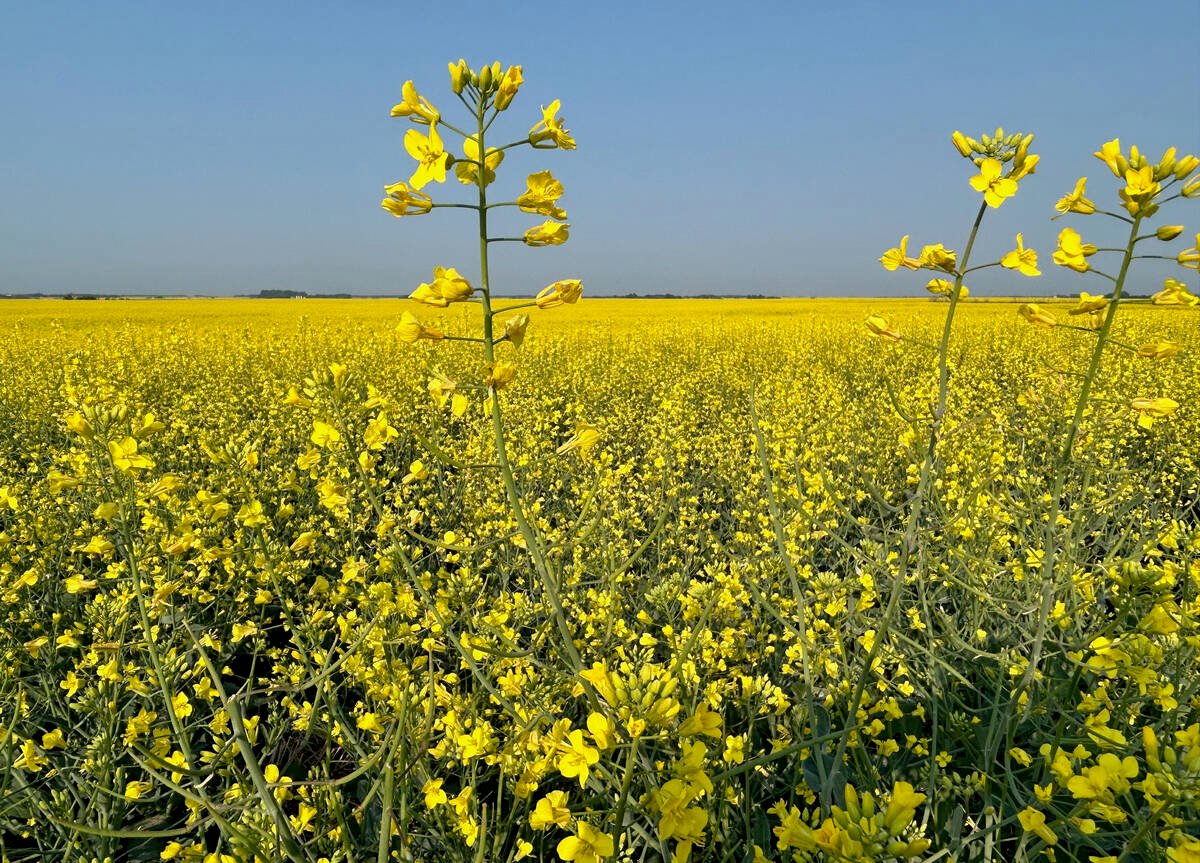Calcium may be a cheap solution to sclerotinia stem rot in canola and other crops.
Ray Lemke, who farms at St. Albert, Alta., is in his third year of using calcium to deter sclerotinia in his 1,300 acres of the oilseed crop.
“It is working, and at a couple of bucks an acre, it is cheaper than Benlate or Rovral,” he said.
While Benlate is no longer available, Rovral Flo costs $16-$33 per acre.
Lemke learned that calcium carbonate was being used to control sclerotinia in South American coffee crops.
Read Also

Record canola harvest expected
Anecdotal reports from agronomists, crop production advisors, landowners and grain industry reps, combined with provincial reports, indicates that canola yields could break the yield record set in 2016
“We tried it in a field with strips of Benlate and Rovral and it worked about the same,” he said of his first trial, three years ago.
Lemke normally would have applied the calcium to his crop with his high clearance sprayer, but “it was too wet this year so I hired a plane.”
In its dry form the calcium carbonate can be applied by aerial dusting, but for the sprayer, it is more effective to use a soluble calcium chloride.
“We tried mixing the calcium carbonate with water but it required a lot of agitation to keep in suspension in the sprayer,” he said.
Lemke bought a refined calcium chloride product called Vertical from Ward Chemical of Calling Lake, Alta.
“It doesn’t plug the nozzles. It’s used for road construction,” said Lemke.
He applied the calcium chloride product in a 1:1 ratio with water at rates of 10 and eight litres to the acre.
“So far the lower rate seems to be working as well as the higher one.”
Lemke has some small untreated areas of canola that are acting as check strips “because the plane couldn’t get to those spots.
“The crop is laying down and heavily infected in those areas. Right next to them it’s sprayed and there’s little or no infection.”
Lemke said the application should lower infectivity by reducing sclerotinia presence this year and next year.
Research at Agriculture Canada in Guelph has shown that calcium works by binding oxalic acid, produced by the sclerotinia fungus to break through the stem or plant tissue walls.
Lemke said the fungus is present on most of his fields in part because of his continuous cropping of canola “for as many as eight years in row. Hey, it works.”
The farmer hopes his experience will spark research into the inexpensive alternative to fungicides.
















